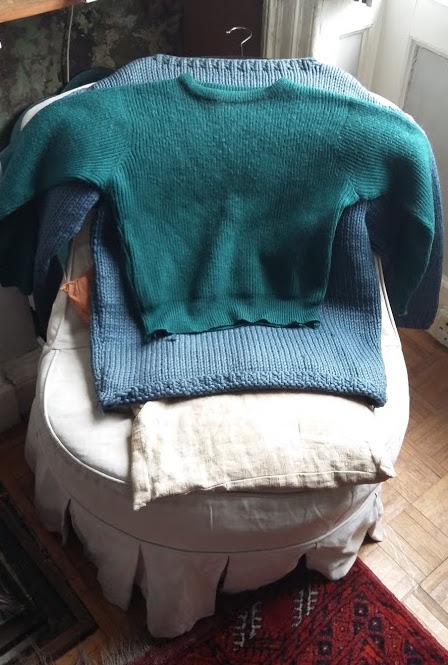June:
I have been conducting a series of interviews where I ask people to choose items of clothing that have a particular memory of person place or thing. They usually have the item of clothing with them, but sometimes talk about an item they no longer have. Each of these interviews has given me a fascinating insight into how memories of clothes contribute to the construction of a person. The neuro psychologist I am working with, Dr Catherine Loveday, has been doing her own more scientific enquiries. She has looked at how clothing compares to objects, image and music as a memory prompter and it’s significance in the formation of identity. She has told me how we all have a period of time from teenage to young adulthood where our memories are particularly significant, called a ‘memory bump’. In her research Catherine has found memory of clothing follows this pattern. Maybe significantly, there was a general pattern for women’s ‘clothing memory bump’ to start slightly earlier than men’s. The shape of the ‘clothing memory bump’ links most closely with music. It makes sense, from the time I was listening to Jesus and Mary Chain and discovering Bob Dylan I was also developing my wardrobe and these memories I would choose as significant in the making of myself.
In my interviews I have heard stories about what it feels like to wear an abaya in Saudia Arabia or school uniform in a 1950’s boarding school. I heard about choosing a first bra in Paris, the influence of mothers or making your own clothes without a mother. I’ve heard from a couple that still have the jumpers they wore when they met at art college in 1958; and the political power of t-shirts in 1980s South Africa. It’s a privilege to hear it all.
Image: 1958 Jumpers, Memory and Clothes Interviews
Something that links it all is the significance to place. The memories are always located in a place, whether geographical or architectural, home or institutional. Ishiuchi Miyako has beautifully, photographically described this link. In her work skin and clothing are interchangeable. She photographed her elderly mother’s skin and at an earlier date interiors of buildings that were used as brothels frequented by American soldiers in her hometown of Yokosuka in a post war period. Whether skin, clothing or architecture, the intimate scars, stains and creases from having been inhabited or worn suggest a story.
Image: Ishiuchi Miyako, Hasselblad Award 2014, published by Kehrer Heidelberg, Berlin. Pages 24 and 25. ‘Hiroshima #21, Hiroshima #5, Hiroshima #9. Preserved clothes worn by victims of the Hiroshima atomic bombing.


